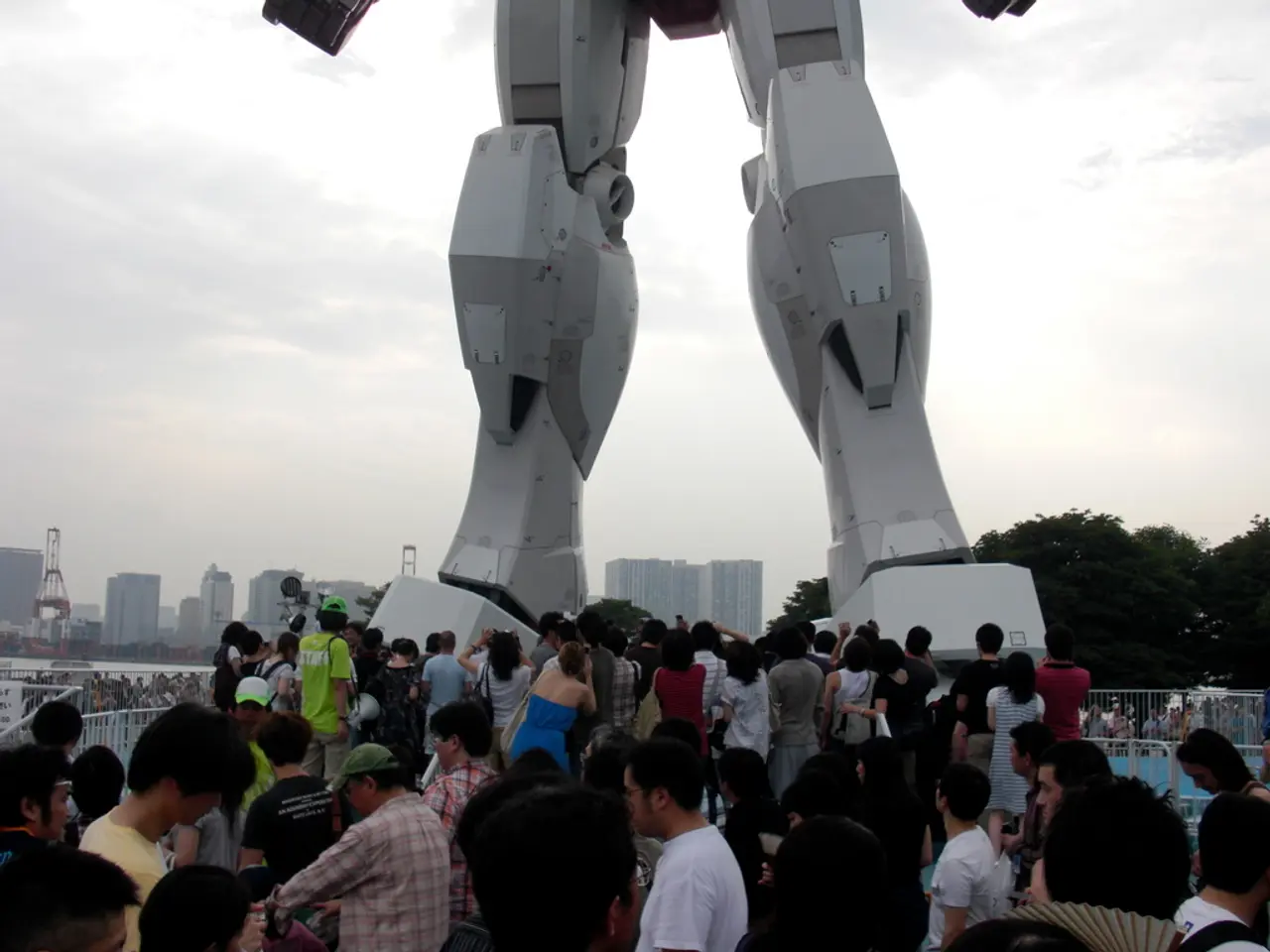Investigating the forthcoming world of robots - a design breakthrough or a looming dystopia?
In the realm of humanoid robot development, China has emerged as a global powerhouse, surpassing Japan's once unrivaled dominance. This shift is primarily due to China's coordinated national strategy, robust manufacturing ecosystem, advancements in AI hardware, and vast talent pool.
Since 2015, the Chinese government has integrated central and local authorities to aggressively fund and coordinate humanoid robotics development. Initiatives such as the $8.2 billion National AI Industry Investment Fund and specialized robotics innovation centers, announced in 2025, channel capital, research, and training resources into robotics on a scale that Japan has not matched recently.
China's manufacturing infrastructure enables mass production and rapid iteration, a significant advantage over Japan's robotics sector, which often faces higher production costs and less integrated supply chains. China produces the world's largest number of graduates in computer science and AI, ensuring continual improvements and innovation in humanoid robotics.
China's lead is evident in its higher robot density compared to the US and rapid expansion of automation across various industries, including electronics, automotive, and emerging sectors like industrial and service robotics. Leading companies like Unitree Robotics and ZHIYUAN ROBOTICS are progressing towards large-scale commercialization and broadened application scenarios.
In contrast, Japan's traditional dominance in industrial robotics has waned due to slower integration of embodied AI and physical AI at scale in humanoid robots, higher production costs, an aging domestic market, and stronger competition from China's government-led mobilization and expansive market.
The age-old dream of creating a mechanical equivalent to a human being is becoming more feasible, with designers experimenting with blends of sci-fi familiarity and cute, unthreatening gestures, expressions, and movements to bridge the uncanny valley. Multiple humanoid robot models are in development, with China at the center of this robot revolution.
As humanoid robots are developed with a social and interactive focus, aiming to solve labor shortages, concerns about job losses in sectors like warehouse work, security, and service industries are rising. The nascent robotics industry is also grappling with lingering unease due to the human-matching proportions and movements of new robots. Anti-robot campaigners from various standpoints, including economic, ethical, moral, and probably religious, are likely to emerge.
Advances in AI capabilities are contributing to the development of more advanced robots. Boston Dynamics, an American startup, created the first robots for the internet age, with their robots known for their muscular technical prowess and potentially threatening appearances. The warehouse and shop floor will likely be the first robotic stomping grounds, with shelf stackers, sweepers, box movers, and security guards potentially losing their jobs.
However, the perception shifts when scaling up to a group of robots. The vast datasets compiled and distilled by the world's various AI systems form the underpinnings of most robotic devices and their ability to process the world around them. The nascent robotics industry is expected to undergo a rapid overhaul of social acceptance and integration, with autonomous domestic robots starting at the top of the market, with butlers, bodyguards, and French polishers being the first to be adopted, before filtering down to the masses.
The robotic hunter killers in the 2017 Black Mirror episode 'Metalhead' (S4E5) were modeled after Spot, a quadruped robot developed by Boston Dynamics, which is used for industrial inspection and security applications. Spot currently starts at $75,000. The future of humanoid robot development is promising, with China leading the charge, and Japan's earlier dominance in robotics technology becoming a thing of the past.
- The National AI Industry Investment Fund, announced by China in 2025, is a significant initiative that channels capital, research, and training resources into robotics, potentially surpassing Japan's historical lead in artificial-intelligence-driven robotics.
- In the rapidly evolving field of humanoid robotics, China's advantage lies not only in its manufacturing infrastructure and vast talent pool but also in its focus on artificial intelligence, a key component that Japan has not matched recently.




